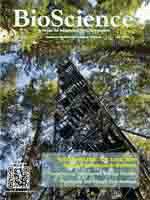To understand current patterns of island biogeography and the processes that underlie these patterns, it is essential to have an appreciation of what has gone before. As such, the study of the temporal and spatial distribution of extinct fauna provides much more than a sideshow (albeit fascinating) of weird and wonderful creatures. Evolution of Island Mammals: Adaptation and Extinction of Placental Mammals on Islands brings together scattered literature to provide a synthesis of the current state of knowledge on fossil insular mammal fauna with the aim of elucidating modern-day patterns of biodiversity on islands.
Evolution of Island Mammals is focused on selected geographic regions and mammalian groups, for which fossil mammal fauna are best known, and provides detailed accounts of faunal composition, faunal turnover, and morphological differences between island fauna and their putative mainland relatives. The book's summary of information on the distribution of extinct insular mammal fauna is itself a valuable contribution to the literature, yet authors Alexandra van der Geer, George Lyras, John de Vos, and Michael Dermitzakis have gone beyond this sizeable task to highlight recurrent insular patterns, with their exceptions, and to speculate on possible mechanisms of speciation, ecological adaptations, and causes of extinction.
Much of the book's information seems to be for the specialized reader, such as detailed anatomical descriptions of dentition and skull morphology that may be less interesting to a nonpalaeontologist. However, the book provides an essential perspective for biogeographers and evolutionary biologists working with extant systems to more fully understand and appreciate biogeographic patterns and evolutionary trends, such as body-size changes. Although the text draws to a limited extent on the ecology and island biogeography of extant mammals (and sometimes other taxa), its focus is on extinct species. This reflects the authors' common research area of vertebrate palaeontology, with a particular emphasis on extinct island mammals. Alexandra van der Geer is an independent researcher at the Netherlands Centre for Biodiversity Naturalis, where John de Vos is the scientific curator. George Lyras is a curator at the Museum of Paleontology and Geology at the University of Athens, Greece, where Michael Dermitzakis is director of the Department of Geology and Historical Geology.
Fossil mammal fauna are examined in the book from two perspectives—first in terms of specific islands or island groups, then by taxonomic group. Although this treatment creates some repetition, it increases the ease with which the information can be accessed, depending on the interest of the reader—whether it be a global perspective of a particular taxon or the extinct mammalian fauna in a specific region. The sections on historical palaeontology, in which the discovery of fossil deposits and the subsequent exploration of each island are described, provide an interesting perspective on the development of the field as the authors explain some initial confusions, subsequent clarifications, and emerging hypotheses relating to the findings.
The chapters are consistently structured, which facilitates comparisons among geographic regions. The shorter chapters are focused on individual taxa and summarize trends observed across regions. The book ends with an attempt to synthesize evolutionary processes, as well as the causes of extinction of mammals in insular environments. It is in this last section that examples from various extant taxa are used to make mechanistic inferences about the patterns seen in the fossil record of mammals. I found these discussions to be somewhat tenuous, especially with regard to mechanisms such as sympatric speciation, which was repeatedly endorsed on the basis of the distributional information of related species alone. Sympatric speciation in animals is thought to be extremely rare and generally requires genetic analysis of the focal species and all potential ancestors. Without the capacity to conduct such analyses for most fossil fauna, I would expect a more cautionary or measured interpretation of speciation models and mechanisms to be applied to the examples in the book.
In addition, the discussions of evolutionary processes in well-studied extant systems are overly simplified. I also found that the last two chapters introduce confusion between the geographical mode of speciation (allopatric or sympatric) and microevolutionary mechanisms (e.g., drift and selection). The book ends abruptly without a concluding section; such a section could have identified current, exciting avenues of research in extinct island mammal fauna or might have summarized the present gaps in our scientific knowledge of the subject, in order to steer the direction of future research.
Despite these shortcomings, Evolution of Island Mammals provides a rich source of detailed information for graduate students and researchers studying either extinct or extant island species. It is generously illustrated and nicely presented. Island biota will continue to provide a fascinating arena for the study of evolution, and this book highlights the value of taking a broader view than the brief snapshot in time provided by contemporary insular biota alone.






